How to Create a Secret Doorway Behind a Bookcase
http://decor-ideas.org 06/11/2014 23:15 Decor Ideas
Everyone’s got something to hide. Cash, documents, jewels, guns, clutter — these are things that earn our extra consideration for being stashed away securely. And no, under your mattress or at the bottom of your sock drawer isn’t going to cut it.
Enter the hidden doorway behind the bookcase. This cool concept keeps your belongings safely tucked away out of sight. Plus, it’s fun. Here’s how to add one.
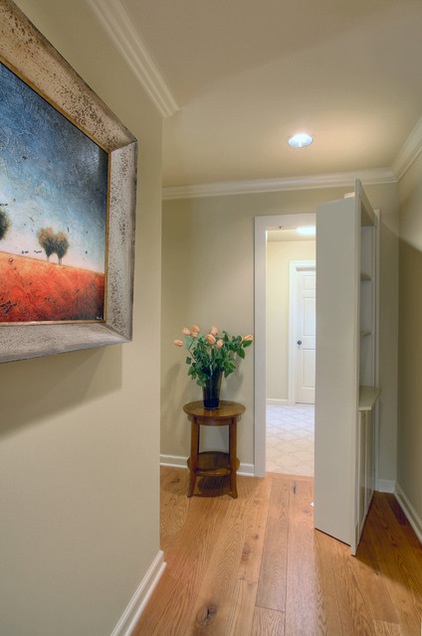
Project: Creating a hidden doorway.
Things to consider: First you’ve got to decide where your secret doorway will be. Obviously, it’s going to be much easier to turn an existing doorway into a hidden one. Hallway closets, laundry rooms, mechanical rooms and home offices are great candidates.
Otherwise, if you choose to cut into an existing wall space, you’ll likely want to hire a professional to help determine if your chosen spot is doable or not. If you have to reroute electrical wiring, plumbing or HVAC ducts, this project can quickly get expensive.
You’ll then want to measure your doorway — 32 inches and 36 inches are the most common widths — and think about how you’ll want to conceal the opening. Bookcases are by far the most popular choice. They do a great job of distracting people from thinking there’s a doorway behind them, and are functional because you can store books and display items on them.
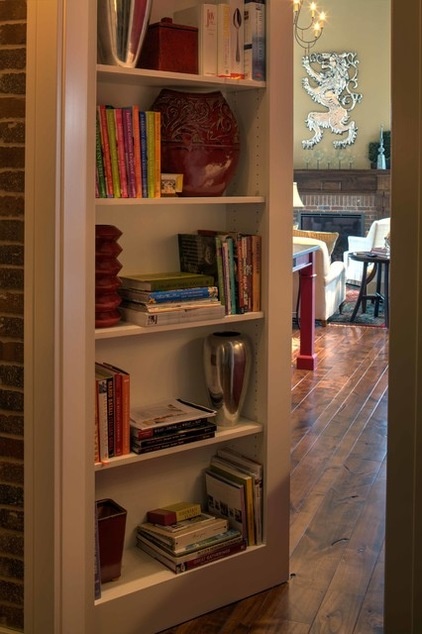
For this project Thad Wende of Wende Woodworking created a custom swivel bookcase that conceals a storage area in which the homeowners keep private personal belongings. To support the weight of books and other accessories on the shelves, most pivoting bookcases sit on a couple of swivel casters that allow the case to roll easily in and out. That’s why carpeted floors aren’t recommended for this style of bookcase.
Wende recommends considering how your bookcase unit and frame will match up with nearby trimwork or other cabinets. “If you can paint it onsite while you’re installing other cabinetry, or at least get a good match to surrounding pieces, that’s best,” he says. “Otherwise it will give itself away.”
He says it would cost about $1,500 to $1,750, parts and labor, for a piece similar to the one shown here.
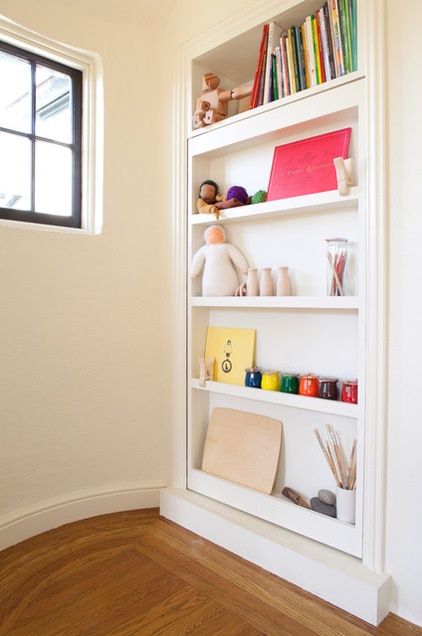
For the 2010 San Francisco Decorator Showcase home, designer Jessica Weigley used this shallow display case to conceal a closet that she turned into a kids’ play nook.
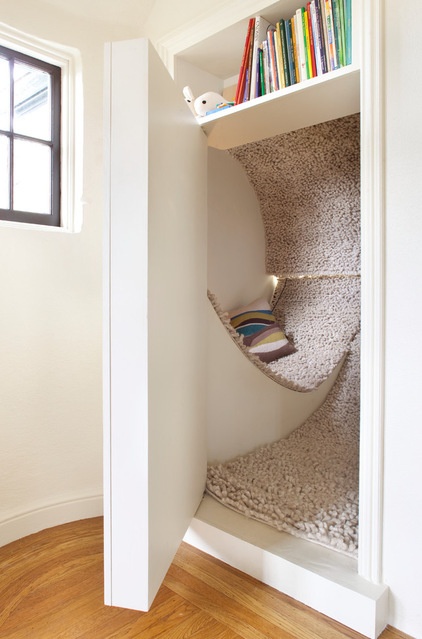
She designed curved plywood ramps — similar to ones made for skateboarding — and covered them in carpet for a cool effect. She guesses a similar design could be done for around $2,000, including parts and labor, and would probably take a weekend to complete.
“Everyone loves that element of surprise,” Weigley says. “When you walk into a room and everything’s understood — there’s the bed, there’s the dresser — it can be boring. Whereas when you create a space that gets revealed or explored, it creates something in people — a sense of wonder that captures their interests.”
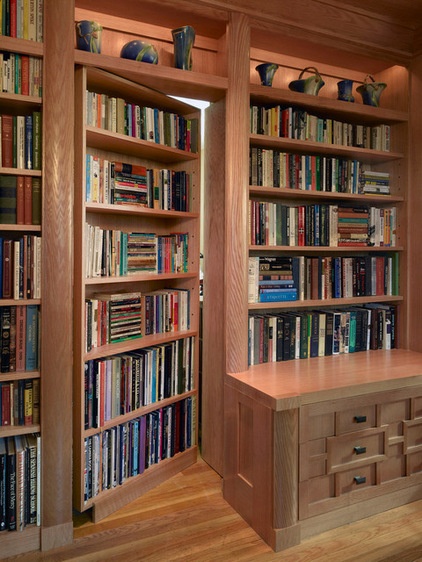
This completely custom bookcase door in a home office leads to a guest bedroom. “The homeowner has a wonderful childlike quality to him,” says Mark Dutka, the general contractor on the project. “He just said, ‘I don’t care what you do. I just want a hidden door.’”
He says it takes a skilled team to create a unit that’s flush with the frame as well as the floor. Otherwise your door-hiding bookcase will stand out like a sore thumb. This project was a three-person job. A designer spearheaded the aesthetic direction and had the technical expertise to assess the wall structure. Dutka made sure it was possible to build it accurately. And a cabinetmaker built the actual unit.
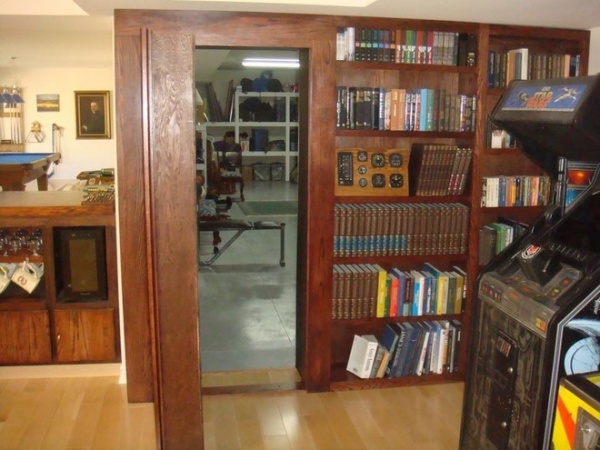
Many companies now make prefabricated units that can be assembled in about an hour by the average homeowner. “If you’ve put together Ikea furniture, you can do this,” says Tim Stepanski, the marketing manager for CS Hardware, which sells prefabricated and semicustom units like the one seen here.
CS Hardware’s prefabricated units come ready to install and take about an hour to put into a standard doorway. They come unfinished so users can paint or stain them to match the surrounding cabinetry. The fully assembled units start at $1,249, or you can buy just the hinge hardware and construction drawings for $150 if you want to build a bookcase yourself with the wood of your choice.
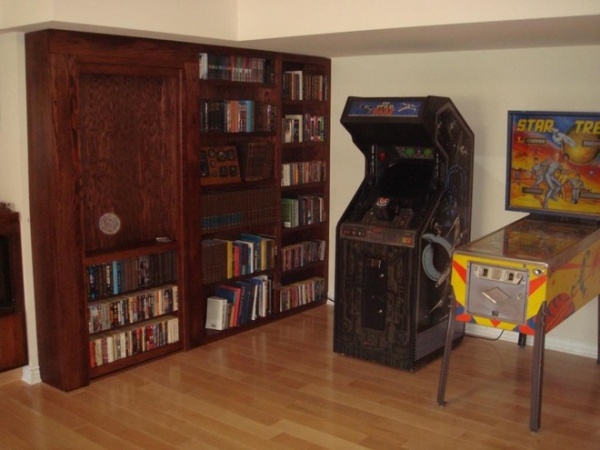
Stepanski says the most common uses are to conceal messy rooms like storage closets and laundry facilities that homeowners don’t want people walking into. “I’ve seen people use them for kids’ playrooms, gun rooms, safe rooms, even Christmas tree rooms where they just store away their Christmas trees and decorations for the year,” he says. “The appeal is that within an hour, all of a sudden you have a hidden room.”
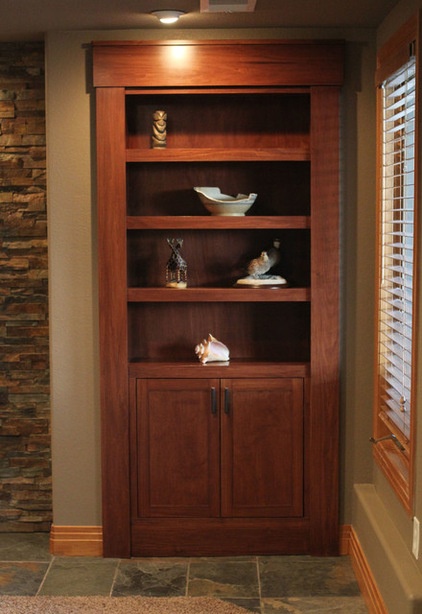
Scott Stephens builds hinged bookcase units for hidden doorways. For this unit his client wanted something that would conceal a sump well.
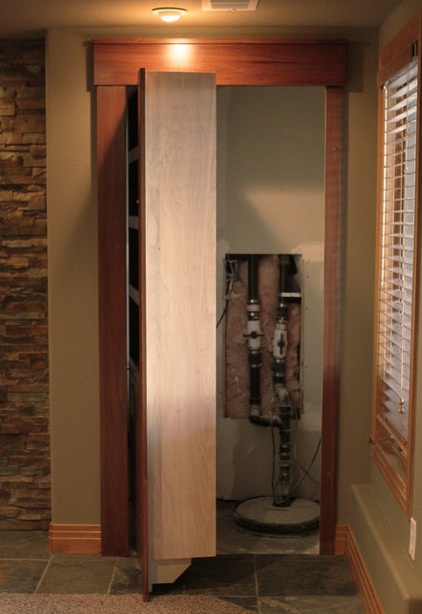
He estimates that a custom unit like this would cost about $1,400.
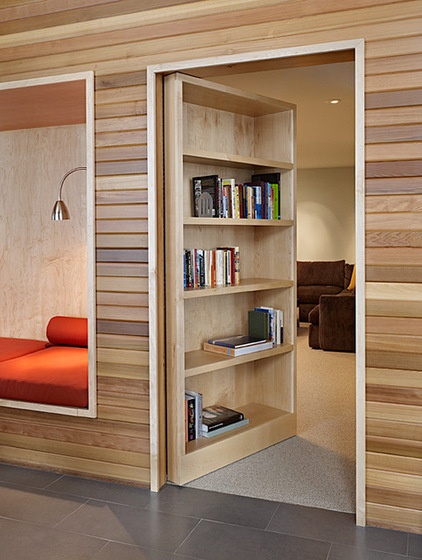
Who to hire: Wende recommends using a local cabinetmaker for a straightforward custom job within an existing door frame. If you’re looking to create a hidden doorway in an existing wall, it’s best to get an architect, a general contractor and a carpenter involved, he advises. “You really need a team that can assess the structural integrity of the wall and create something that is going to work smoothly,” he says.
Prefabricated kits can usually be installed by a handy homeowner.
Find pros near you
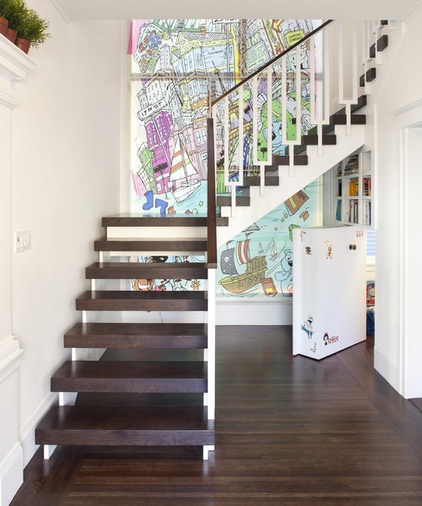
Time it takes: Wende says a team of two can remove an existing door frame and jamb and install a prefinished custom unit in about half a day. Stepanski says prefabricated units that arrive fully assembled can be installed in about an hour by the average homeowner.
More: Shhh … It’s a Secret (Door, Room, Staircase)
Related Articles Recommended












